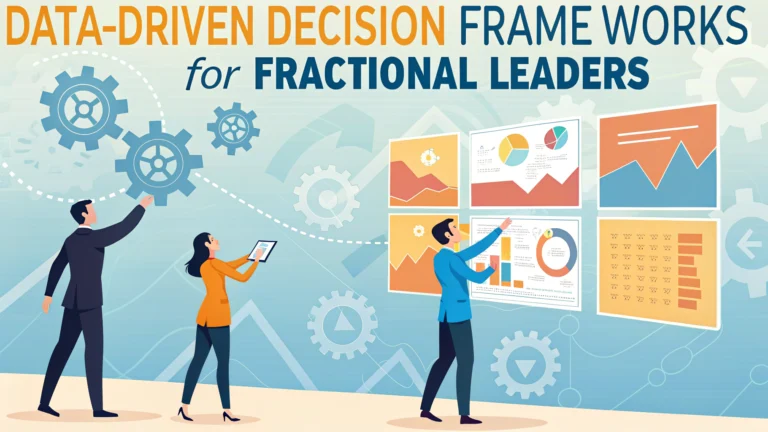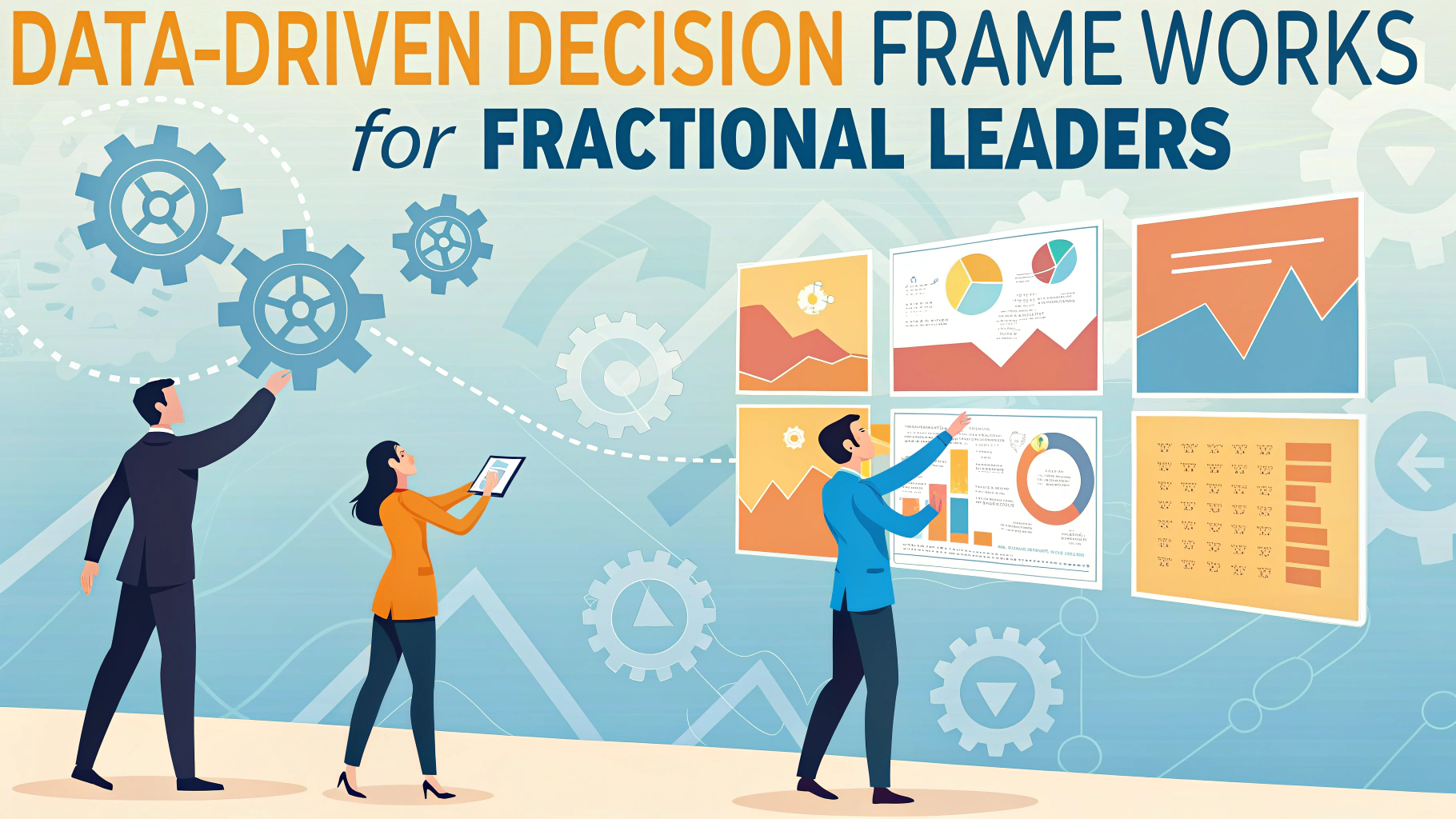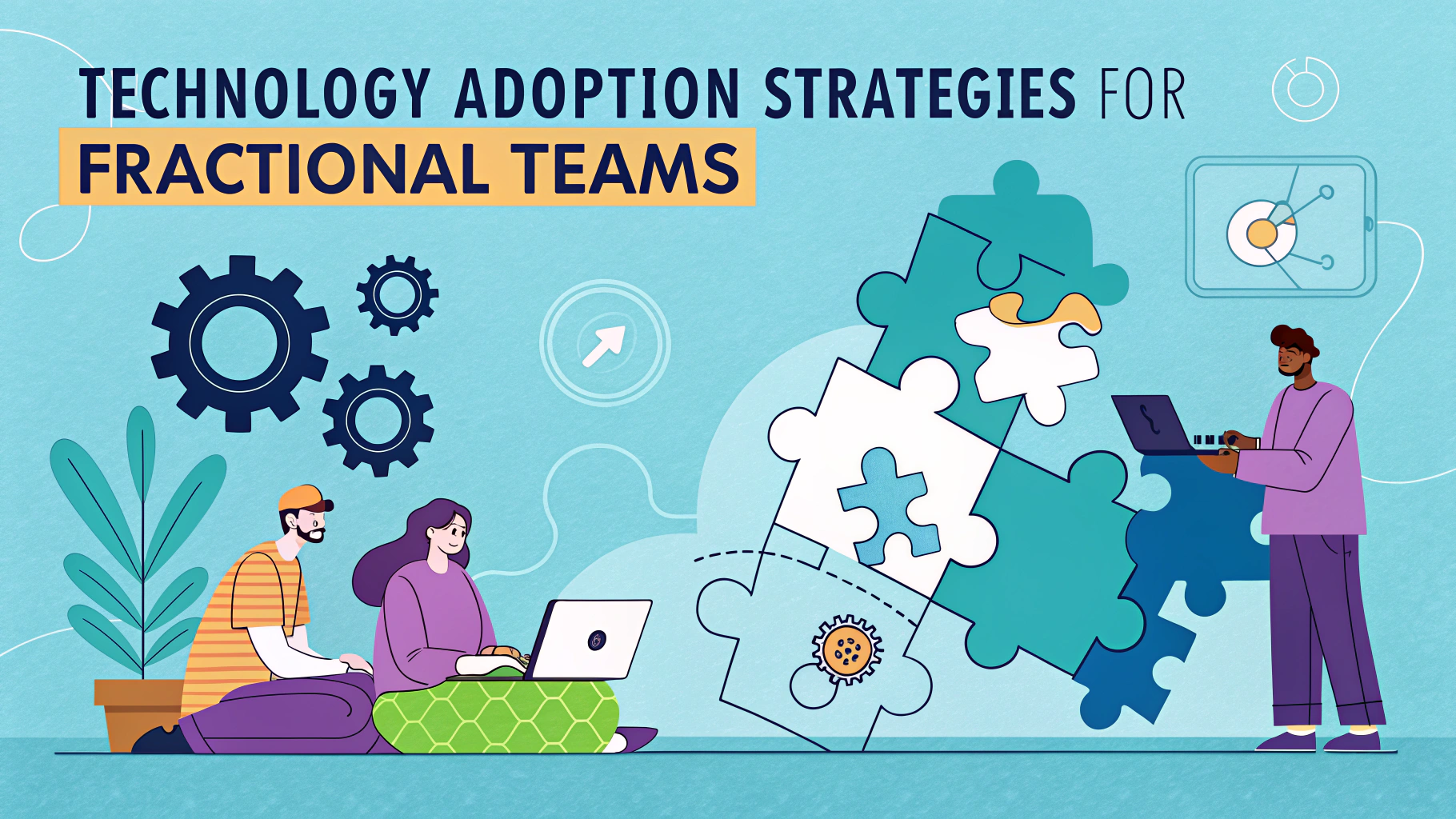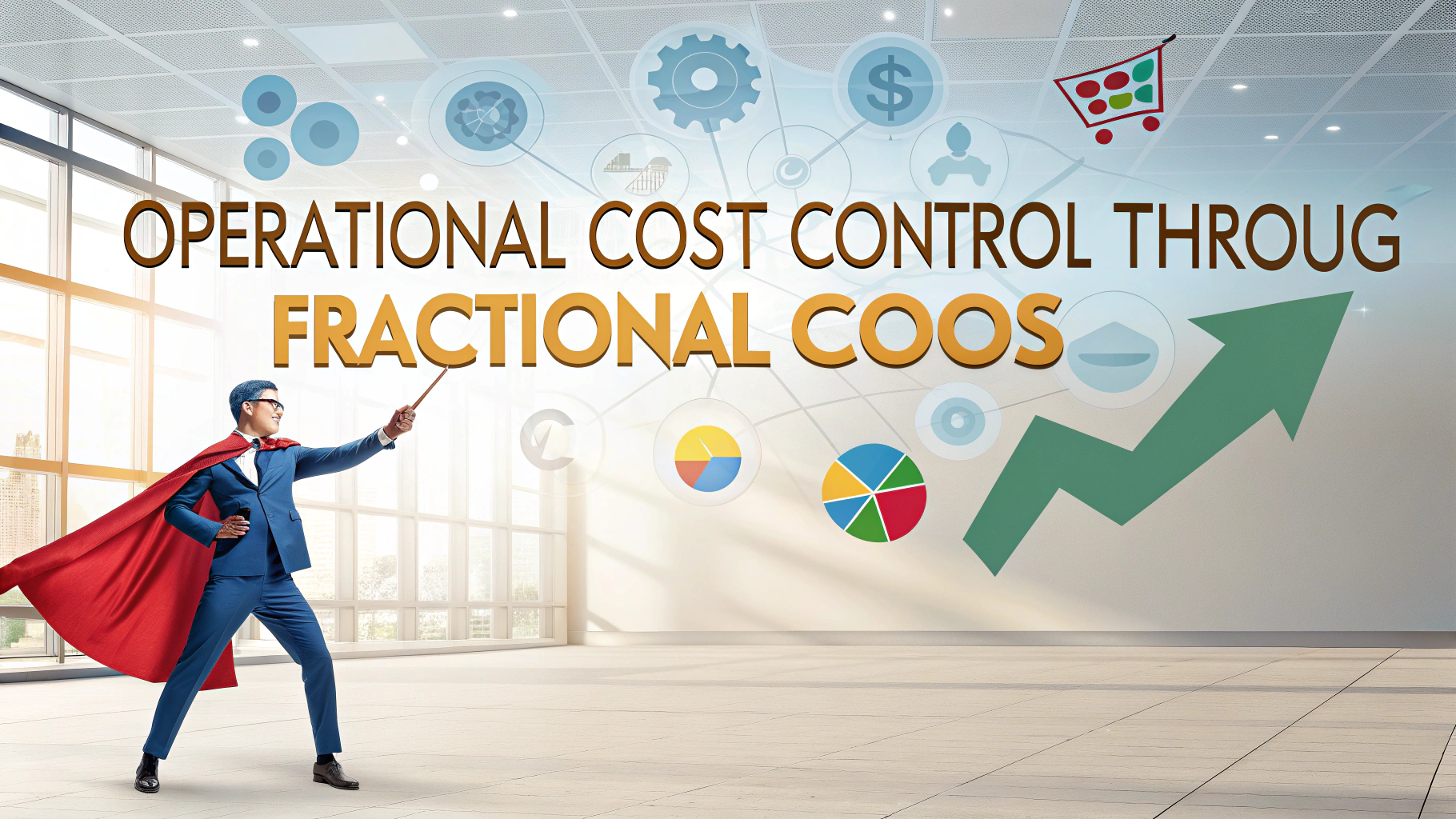Data analysis tools and decision frameworks help fractional COOs make faster, more accurate strategic choices for their client organizations.
Fractional leaders need systematic approaches to quickly understand new business contexts and implement effective solutions across different companies.
This guide explores practical frameworks and tools that enable fractional COOs to make high-impact decisions backed by data.
Key Decision Frameworks for Fractional COOs
- DACI Framework – Driver, Approver, Contributor, Informed
- RAPID – Recommend, Agree, Perform, Input, Decide
- Cost-Benefit Analysis with ROI calculations
- Risk Assessment Matrix for evaluating options
Essential Data Sources
- Financial metrics and KPIs
- Customer feedback and satisfaction scores
- Employee performance data
- Market research and competitive analysis
- Process efficiency measurements
Data Analysis Tools
| Tool Type | Recommended Options | Best For |
|---|---|---|
| Business Intelligence | Tableau, Power BI | Visual data analysis |
| Analytics | Google Analytics, Mixpanel | User behavior tracking |
| Project Management | Asana, Monday.com | Performance tracking |
Implementation Steps
- Data Collection: Identify key metrics and data sources
- Analysis: Apply appropriate frameworks to interpret data
- Stakeholder Input: Gather feedback from key team members
- Decision Making: Use frameworks to reach clear conclusions
- Implementation: Create action plans with measurable outcomes
Common Pitfalls to Avoid
- Relying too heavily on historical data
- Ignoring qualitative insights
- Not adapting frameworks to company context
- Failing to document decision rationale
Measuring Success
Track these key metrics to evaluate decision effectiveness:
- Time to implementation
- ROI on decisions made
- Stakeholder satisfaction
- Achievement of target outcomes
Building Your Decision-Making Toolkit
Contact professional organizations like the Association for Corporate Growth or the Society for Human Resource Management for additional resources and networking opportunities.
Consider certifications in data analytics or decision science through platforms like Coursera or edX to strengthen your analytical capabilities.
Join fractional leadership networks like CEO Xchange to share experiences and learn from peer fractional executives.
Advanced Analytics Integration
Fractional COOs can enhance their decision-making capabilities by integrating advanced analytics tools:
- Predictive analytics for forecasting trends
- Machine learning for pattern recognition
- AI-powered decision support systems
- Real-time dashboards for continuous monitoring
Stakeholder Management Strategies
Communication Frameworks
- Regular update cadence
- Decision documentation templates
- Feedback collection systems
- Alignment workshops
Change Management Tools
- Impact assessment matrices
- Resistance management plans
- Training and support programs
- Success metrics tracking
Scaling Decision Frameworks
Adapt frameworks across different organization sizes:
| Company Size | Framework Adaptation | Key Focus Areas |
|---|---|---|
| Startup | Agile, lightweight processes | Speed, flexibility |
| Mid-Market | Balanced approach | Scalability, efficiency |
| Enterprise | Comprehensive systems | Governance, compliance |
Empowering Data-Driven Leadership
Success as a fractional COO requires combining robust frameworks with adaptable implementation strategies. Focus on:
- Continuous learning and framework refinement
- Building scalable decision-making processes
- Maintaining flexibility across different business contexts
- Creating lasting value through documented best practices
Remember that frameworks and tools are enablers – the key is applying them thoughtfully to drive meaningful business outcomes.
FAQs
1. What is a data-driven decision framework for fractional leaders?
A systematic approach that combines data analytics, metrics, and KPIs to help part-time or fractional executives make informed strategic decisions based on quantifiable evidence rather than intuition alone.
2. How do fractional COOs implement data-driven frameworks in different organizations?
Fractional COOs assess existing data infrastructure, establish relevant metrics, implement reporting systems, and create standardized processes that can be executed part-time while maintaining consistency across multiple clients or organizations.
3. What key metrics should fractional leaders focus on when building decision frameworks?
Essential metrics include operational efficiency indicators, financial performance metrics, customer satisfaction scores, employee productivity measures, resource utilization rates, and process optimization benchmarks.
4. How often should data-driven frameworks be reviewed and updated by fractional leaders?
Frameworks should be reviewed monthly for tactical metrics and quarterly for strategic indicators, with comprehensive annual assessments to ensure alignment with organizational goals and market conditions.
5. What tools are commonly used in data-driven decision frameworks for fractional leadership?
Popular tools include business intelligence platforms (like Tableau or Power BI), project management software, performance tracking systems, and integrated data analytics solutions that enable remote monitoring and management.
6. How can fractional leaders ensure data quality in their decision frameworks?
By implementing data validation processes, establishing clear data governance policies, using reliable data collection methods, and regularly auditing data sources for accuracy and consistency.
7. What are the main challenges in implementing data-driven frameworks as a fractional leader?
Common challenges include limited access to company data, inconsistent reporting systems across organizations, resistance to change from full-time staff, and the need to balance multiple client requirements simultaneously.
8. How do data-driven frameworks differ for fractional COOs versus full-time executives?
Fractional frameworks must be more scalable, transferable between organizations, and designed for remote monitoring, with clear documentation and automated processes to ensure continuity during the leader’s absence.
9. What role does artificial intelligence play in fractional leadership decision frameworks?
AI helps automate data analysis, identify patterns, predict trends, and provide actionable insights, enabling fractional leaders to make faster, more accurate decisions across multiple organizations.
10. How can fractional leaders measure the ROI of their data-driven decision frameworks?
Through tracking key performance indicators, measuring improvements in operational efficiency, calculating cost savings, monitoring revenue growth, and comparing performance metrics before and after framework implementation.







